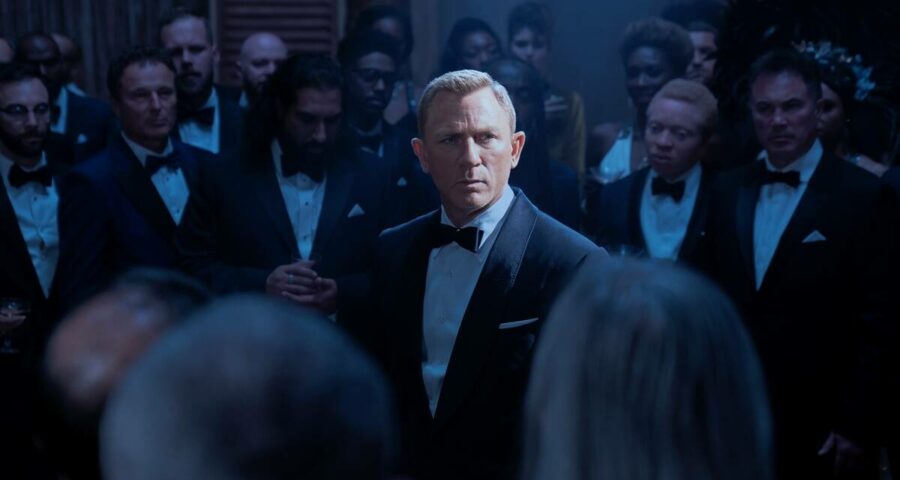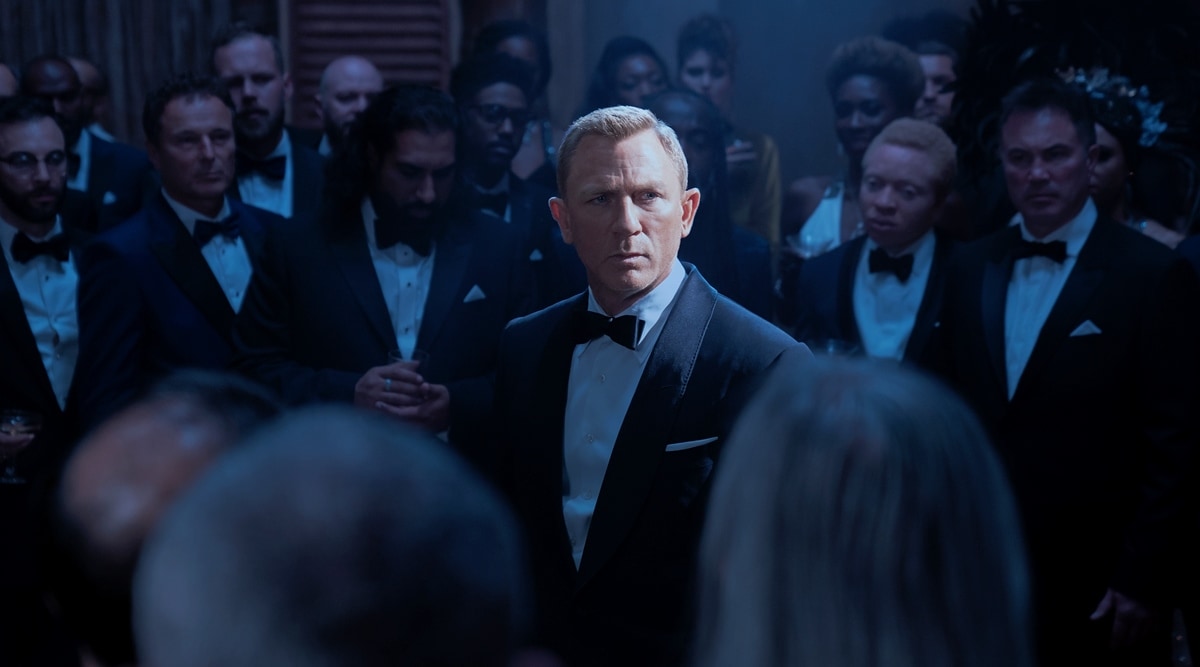No Time to Die movie review: Daniel Craig’s 007 doesn’t just bruise, he hurts. He doesn’t just ripple with muscle; he ripples with the creases that years of unspeakable horrors have left on his face. And what a face that is!
No Time to Die movie cast: Daniel Craig, Lea Seydoux, Lashana Lynch, Ralph Fiennes, Rami Malek, Christoph Waltz, Ana de Aramas
No Time to Die movie director: Cary Joji Fukunaga
No Time to Die movie rating: 3.5 stars
Time, death, past and future are a deep, recurring theme in this 25th Bond film. It also, of course, marks the end of the Daniel Craig era —that will be a very hard act to follow.
For all that, No Time To Die — with no less than four screenwriters including the director himself (True Detective’s Fukunaga), old Bond hands, and the much-anticipated Phoebe Waller-Bridge addition — is much too long, much too convoluted, and much too un-Bond like. Part of the reluctance to end sooner, one suspects, has to do with the burden of saying goodbye to the actor who has moulded the character born circa World War II for the 21st century, where heroes don’t just have big hearts but also heavy ones, and wear the same on their sleeves.
Craig doesn’t just bruise, he hurts. He doesn’t just ripple with muscle; he ripples with the creases that years of seeing unspeakable horrors have left on his face. And what a face that is — the crowning glory of this Bond, more than his body, which is nicely decked out variously from brief briefs to tight tuxedos. It has eyes that burn into you, it has lines that evoke its pain, it has a smile that warms your heart, it has a twinkle that few can resist, and it has tears that flow down easily.
No Time To Die can’t have enough of Craig. And that is both what saves and dooms it.
Meanwhile, there is the plot.
While we are still gasping from a pandemic that may or may not be lab-born, the story hangs on engineered DNA that has been stolen from an “off-the-books” British government facility. The enormous evil of the project (however gobbledygook the science) is breath-taking in its tone deafness. Fiennes’s M even tries explaining that “it was never meant to be a weapon of mass destruction”. Really, we want to go there?
It is not just here that the film has its geopolitics all ill-thought through. While the UK is clutching onto relevance with the unfortunately named AUKUS, Britain’s centrality to saving the world is an incongruous hope, more than anything else. And even as Russia expands its influence, the film’s portrayal of it, Japan and Cuba (and the people there in) as the sites of an axis of evil, but irrelevant to destroying it, is the kind of oversight that better movies no longer make.
While the contribution of Fleabag’s Waller-Bridge was meant to elevate Bond to more feminist standards, women remain similarly central but partial in the grand scheme of things. Seydoux returns as Madeline Swann, but is reduced to almost infuriating domesticity. The film’s biggest leap is in making the new 007 a woman and Black. But Lynch is more of the same, dressed in awkward pantsuits, hand tucked uncomfortably into a pocket, trying to fill ‘that man’s’ shoes. The one totally liberated woman in the entire film, Aramas’s Paloma, is dispensed with quickly. The charismatic Aramas (with Craig, she similarly crackled in Knives Out) floors a Cuba fight sequence, in a plunging neckline, a slit-to-thigh dress and stilettos, but makes you just focus on that dazzling smile. No one can resist that, not even the pining for love (and he really pines here) Bond.
And then there are the insipid villains — Malek in a deformed face and kimono-ish robes really hamming it; and Waltz in a brief Hannibal Lecter-like appearance. One of them used the other to DNA-kill the world. Sometimes it is one way, then it’s the other. Whenever Malek’s Lyustifer Safin tries to give it the spin that he and Bond are two sides of the same twisted mirror, he only makes the incoherence of this idea even worse.
Plus there is the final set piece, on an island with lengths and lengths of corridors, silent minions slogging away in poisonous water pools, world’s data at the fingertips of a totally ridiculous Russian scientist, etc etc. The film unfortunately makes its way there after a near-perfect clash in a misty forest and some spectacular car chases, particularly through an ancient Italian city.
Then there is Craig. When the dust is settled (and there is a lot of dust to settle), when it’s time for the sunset (it’s a glorious one), when it’s time to make the call (and he has had to make them often), his Bond stands tall and strong, little and defenceless; all-too-knowing, much-too-unsure — you can call him James, just James.
Source: Read Full Article





